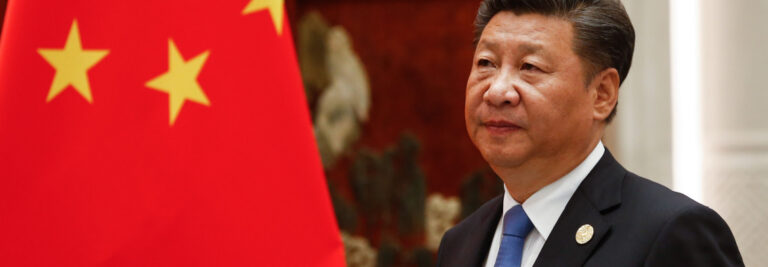While the recent uptick of Chinese exercises and patrols around Taiwan have not amounted to a crisis—and Taipei is right not to treat any incident thus far as such—taken together, they are indicative of Beijing’s malign intentions and point to the People’s Liberation Army’s (PLA) rapidly advancing capabilities. If it is true that intent plus capability equals threat, then the threat to Taiwan is clearly growing. Increasingly, a Chinese use of force is not some distant possibility but rather a danger that draws closer day by day. This development appears to be well understood at Taiwan’s Ministry of National Defense and in its National Security Council, but it is not at all clear that the broader population has a firm grasp of the looming peril. As such, the Tsai administration should consider altering its restrained rhetorical responses to PLA activities and instead highlight those activities to build support for potentially unpopular defense reforms. Although Taiwan has been strengthening national defense through the implementation of its Overall Defense Concept (ODC), a crucial component of Taiwan’s defensive toolkit has been relatively neglected. The reserve force is undersized and undertrained, and thus lacks the deterrent punch it should carry. Now is the time to begin addressing these deficits.
Whither the Reserves?
The Overall Defense Concept (ODC), announced in December 2017, elevates the role of asymmetric approaches to Taiwan’s defense, which are crucial to successfully defending against invasion, while continuing to emphasize conventional approaches to less stressful scenarios, as I have argued for the Global Taiwan Brief previously:
It may be the case that Taiwan is not buying enough of the asymmetric capabilities it says it needs. The capabilities balance—between high-end and low-end, between those optimized for scenarios short of invasion and those crucial for that eventuality—may be off. But MND is not neglecting its asymmetric requirements. It is striving to field a force suited to the conducting a variety of missions, from peacetime deterrence to defending against invasion and occupation. For a country of nearly 24 million people, this is no easy task.
A harder task yet remains, however. For although MND is not neglecting asymmetric requirements, the Tsai administration has failed to prioritize what should be seen as a necessity: radically improving the reserve force. The reserve force is the crucial last line of defense in an invasion scenario. As such, large, lethal reserves help to ensure Beijing never makes the attempt.
The reserve forces do have a role to play in the ODC. The ODC, as described in MND’s 2019 National Defense Report, has three pillars: “force protection” (or what the US-China Security and Economic Review Commission has called “preservation of warfighting capability”); “decisive battle in littoral zone”: and “destruction of enemy at landing beach.” Per the National Defense Report, in service of the ODC, the reserve forces are developing capabilities for “safeguarding littoral zone, protecting [High Value Targets], and conducting anti airborne/heliborne [sic] operations.” These are critical missions in the event of an invasion and, given that the regular forces will be tied up along the coastline, assigning them to the reserves is sensible. The missions suggest that a relatively small portion of the reserve forces will be highly trained for combat with elite Chinese warfighters—paratroopers, air cavalry, and perhaps special forces.
Neither the ODC nor the overriding “resolute defense and multi-domain deterrence” military strategy, however, provide any guidance for sustaining the defense of Taiwan in the event that the PLA successfully establishes a beachhead and launches a drive inland. Unless the plan is to give up the fight, Taiwan’s reserve force will be the difference-maker.
At present, it is highly questionable whether Taiwan’s reserve force can make that difference. According to a 2017 RAND report, there are 2.5 million men in the military reserve system plus 1 million civil defense volunteers (which would be responsible for “air raid defense, communications, firefighting, first aid, and traffic control”). In aggregate, that number accounts for less than 15 percent of Taiwan’s population and “one man out of every four.” As Ian Easton, Mark Stokes, Cortez A. Cooper, and Arthur Chan, the report’s authors, explain, these reservists are not well trained:
Taiwan’s force transformation program reduced compulsory military service for the reserve force from one year to four months of basic and specialized training prior to assignment to the reserve force, and the service does not necessarily have to be continuous. For example, a university student may divide his military service commitment into two eight-week periods over two consecutive summers to fulfill his service obligation. After that, the conscript will register with his local reserve command, where he will report for duty only once every two years for a mere five to seven days of refresher training. That equates to as little as 20 days of training spread out over eight years. After eight years, conscripts will go into inactive reserve status, and Taiwan will call these inactive reservists back into service only in the event of a war.
Easton et al., with remarkable understatement, conclude: “current reserve force training is insufficient to meet the challenges posed by the increasing threat from the PLA.”
If Taiwan’s reserve forces are to have a meaningful deterrent effect vis-à-vis China, they will need to be capable of conducting the missions assigned to them in the ODC, contributing to a fight with PLA regulars marching on Taipei and other centers of gravity, and waging a prolonged insurgency in the event that the PLA occupies the island. In other words, the reserve force likely needs to be far larger, far better trained, and sufficiently armed.
Is Reform Possible?
These are difficult reforms to pursue. Such reforms, of course, require dedication of resources. Training does not come cheap and reservists must be paid. The defense ministry might have to invest in numerous arms caches, extensive tunnel systems, and secure yet easy-to-use communications equipment. In short, MND should be planning to train and equip millions of people for a prolonged fight, while also ensuring smaller groups of elite reservists are ready to carry out highly skilled or high-tech-dependent missions. Despite growing defense budgets in Taiwan, such resources are not readily available.
Significantly expanding the reserve system is an exceptionally difficult political problem. It is one thing to convince a voter of the need for an increase in defense spending at the expense of other priorities. It is quite another to convince that voter to spend new moneys on an effort that will put him (or her) through strenuous military training and take him away from his family, job, and other obligations more frequently and for longer periods.
This is why the Tsai’s administration’s somewhat muted responses to Chinese military activities around Taiwan are misguided. The government need not exaggerate the threat, but it should be forthright in describing it and categorical in explaining what is necessary to counter it. MND should consider quarterly public briefings (delivered orally with accompanying fact sheets) on PLA patrols, exercises, and other activities of relevance to Taiwan. Such regularly scheduled updates would allow Taiwan’s population—and the international community—to more readily understand how Chinese behavior and capabilities are changing over time. President Tsai should draw attention to these briefings on social media and in public remarks. She should also consider giving an annual address focused narrowly on the Chinese military threat.
Recent public opinion polling suggests that Taiwan’s people may be, more than in the past, particularly receptive to arguments about China’s ill intentions, and less likely to dismiss as fear mongering a focus on the military threat. As Russell Hsiao described in the previous issue of the Global Taiwan Brief, the Mainland Affairs Council’s latest poll “indicates that the numbers of people on the island who think China is unfriendly toward the Taiwan government and the public have risen to 76.6 percent and 61.5 percent, respectively.” These numbers have been on an upward trajectory since 2016 and are now the highest they have been in a decade.
In another poll, commissioned by Yao-Yuan Yeh, Charles K.S. Wu, Austin Wang, and Fang-Yu Chen and conducted in April 2019, 62.4 percent of respondents said they believed their “conscription training to be helpful in the battlefield.” Those perceptions may or may not be accurate, but they do at least suggest a populace that is not ill disposed to mandatory military training.
It is easy to say that voters will never support large increases in defense spending or a major revamping of the reserve system. That may, in the end, turn out to be true. But at present, Taiwan’s leaders do not appear to be effectively making the case that Taiwan’s people must sacrifice more to ensure their freedom. China is providing the ammunition with which to make that case. It is past time to start doing so.
The main point: The Tsai administration should be forthright in describing China’s growing military threat and categorical in explaining what is necessary to counter it: more defense spending and a much-expanded military reserve system.



